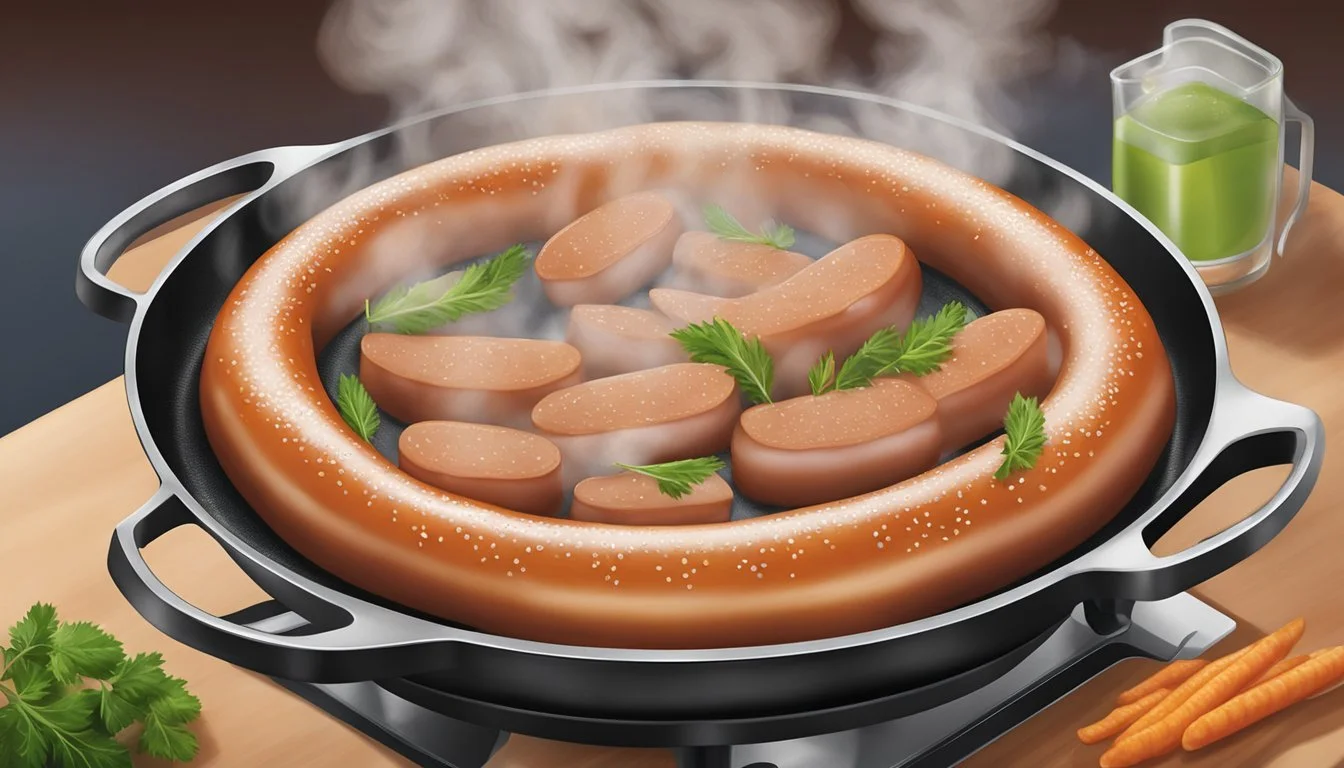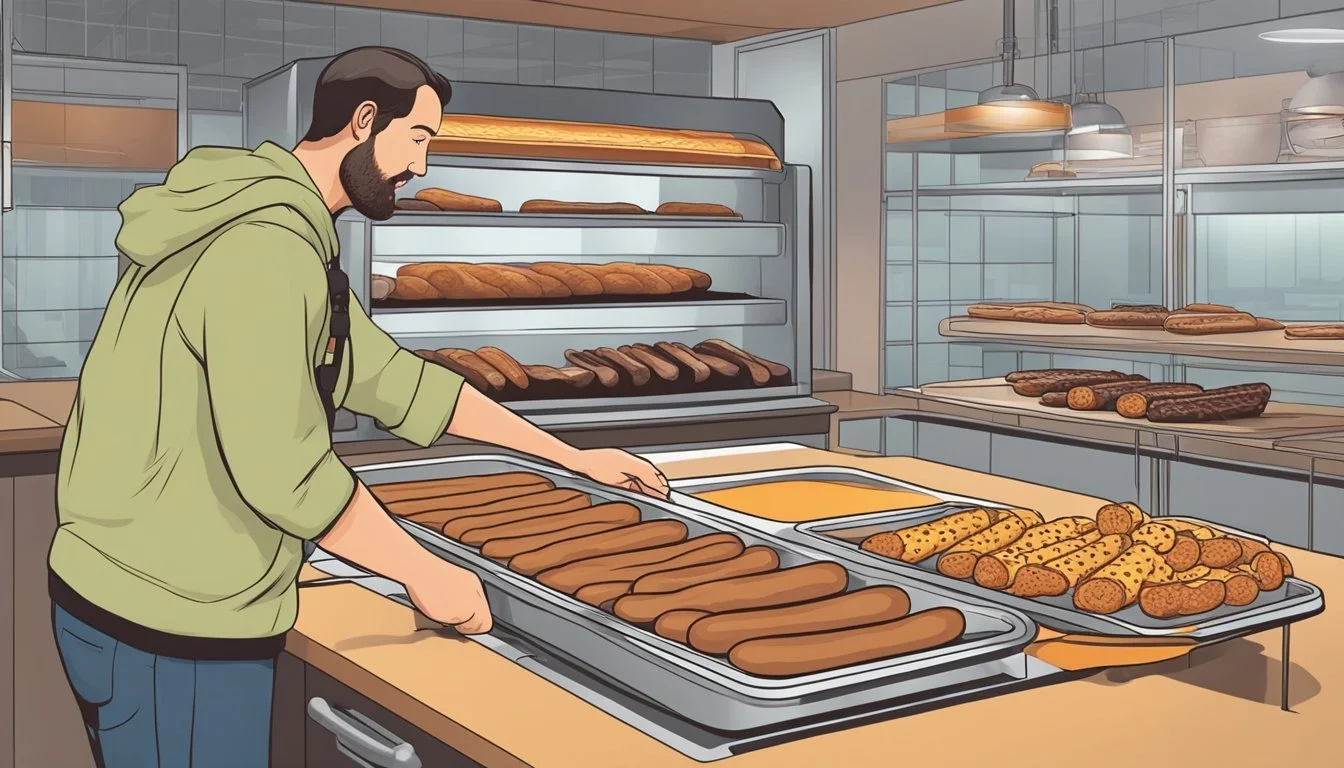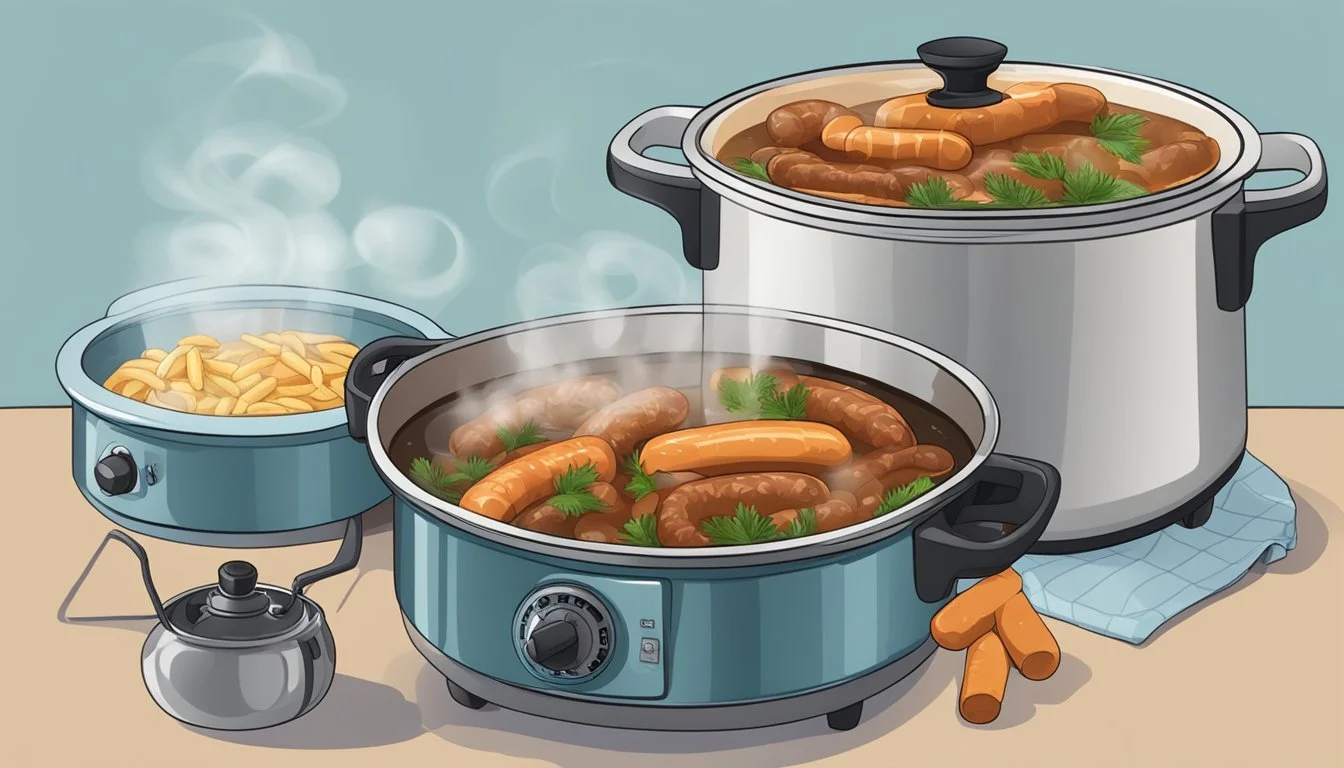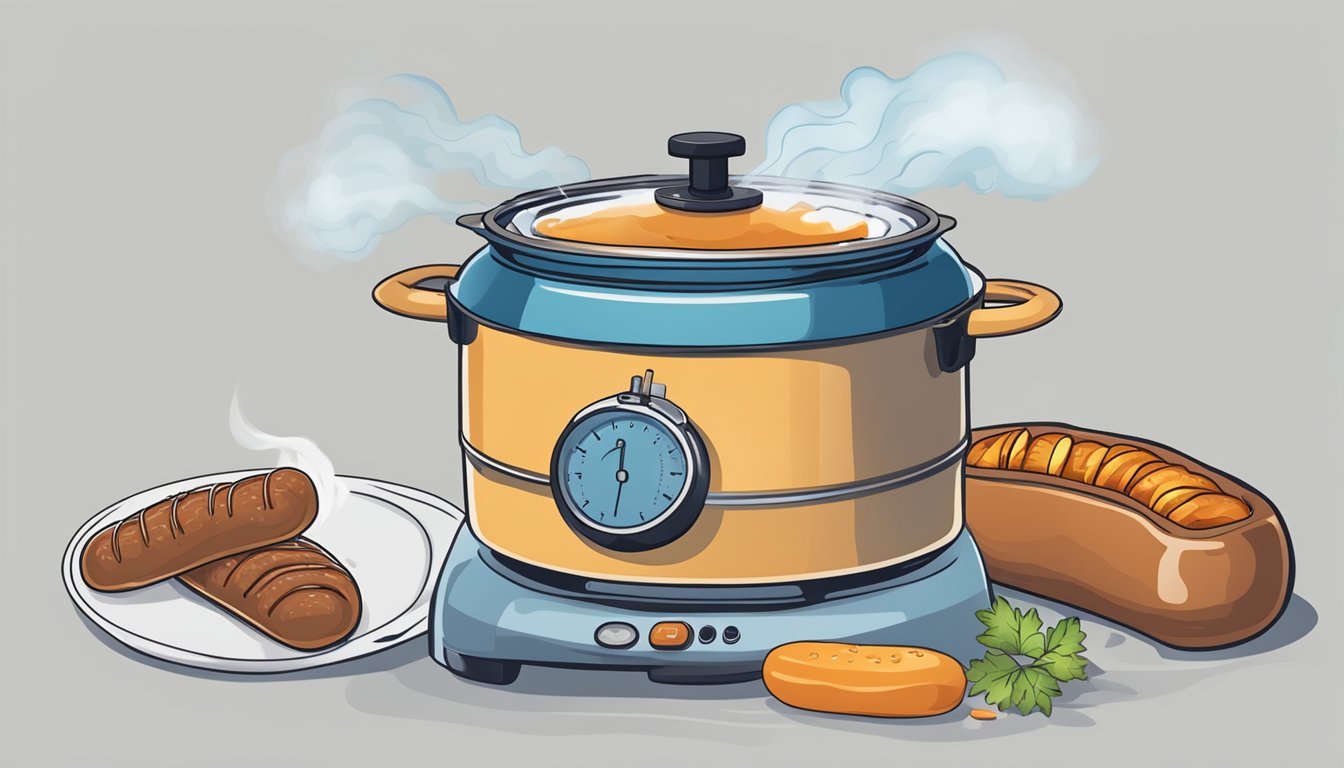Best Way to Reheat Knackwurst
Ensuring a Tender and Juicy Bite Every Time
Knackwurst, a savory German sausage known for its distinctive garlic flavor, presents a culinary challenge when it comes to reheating. Like most sausages, knackwurst risks losing its tender texture and juiciness if not reheated properly. Achieving the perfect balance of heat and moisture is vital to preserve the quality of the sausage, ensuring it remains as enjoyable as when it was first cooked.
The secret to reheating knackwurst lies in gentle heat application and maintaining the sausage's inherent moisture. Methods vary from stovetop simmering to utilizing an oven or even a microwave, but all techniques share the same goal of enhancing the eating experience without sacrificing the knackwurst's flavor or texture. Chefs and culinary enthusiasts agree that a careful approach is paramount to optimize the outcome when reheating this traditional German delicacy.
Selecting the Reheating Method
For the best results in reheating knackwurst to preserve its tenderness and juiciness, one must consider the appropriate reheating technique. A variety of methods can be applied depending on the desired outcome and available kitchen equipment.
Oven Reheating Techniques
Reheating knackwurst in an oven requires preheating the oven to a moderate temperature to avoid drying out the sausage. Encasing the knackwurst in aluminum foil ensures even heat distribution and helps to retain moisture. Recommended oven temperature settings range from 275°F to 350°F. A small amount of liquid, such as broth, can be added before sealing the foil to help maintain juiciness.
Stovetop Warming
A skillet on the stovetop offers a quick method for reheating knackwurst. The cook should add a small amount of broth or water to the pot and gently warm the sausage over medium heat. This technique allows for beneficial monitoring of the reheating process to prevent overcooking.
Slow Cooker Advantages
Using a slow cooker or crockpot allows for a "low and slow" approach, which can be particularly effective for keeping the knackwurst tender. The knackwurst should be submerged in a cooking liquid, such as a broth, and reheated on a low setting to prevent the loss of moisture and ensure thorough heating without risking the texture.
Microwave Heating
For a quick option, the microwave can reheat knackwurst rapidly. Although not the best method for retaining moisture, wrapping the knackwurst in a damp paper towel and using a low-power setting can somewhat mitigate moisture loss. It's essential to bring the knackwurst to room temperature before microwaving to promote more even heating.
Sous Vide Method
The sous vide method excels at reheating without compromising texture. Knackwurst is placed in a vacuum-sealed bag and submerged in a water bath at a precisely controlled temperature, usually around 140°F to 160°F. Using a sous vide machine ensures that the knackwurst remains juicy and reheats evenly, though this method may take longer than others.
Preparation for Reheating
Proper preparation for reheating knackwurst is essential to maintain its tenderness and juiciness. Adequate room temperature resting, moisture retention strategies, and the addition of liquids play significant roles in this process.
Bring to Room Temperature
Knackwurst should be brought to room temperature before reheating. This allows for a more even warmth distribution throughout the sausage. For leftovers, it is recommended to let the knackwurst sit out of the refrigerator for approximately 15-20 minutes.
Preventing Moisture Loss
To prevent the knackwurst from losing moisture and becoming dry during reheating, one should wrap it in a material that retains moisture. Wrapping the sausage in a double layer of foil or using plastic wrap can be effective. These coverings help to create a steamy environment, keeping the knackwurst juicy.
Adding Additional Liquids
Introducing additional liquids can enhance the tenderness of the reheated knackwurst. Before sealing the knackwurst within the foil or plastic wrap, one might add a tablespoon or two of beef broth or cooking juices to the package. A splash of apple juice can also impart additional flavor and moisture. When preheating the oven, setting it to a moderate temperature, such as 325°F, prepares it for a gentle reheating that won't compromise the sausage's texture.
Maintaining Quality and Flavor
When reheating knackwurst, it's important to preserve its succulent flavor and quality without sacrificing the juiciness. The key is gentle heating to the optimal internal temperature, the use of sauces and marinades for enhanced taste, and proper covering for moisture retention.
Optimal Internal Temperature
To ensure knackwurst stays tender and juicy, one should aim for an internal temperature of 165°F. A meat thermometer is crucial for monitoring without repeatedly cutting into the meat, which can cause it to dry out.
Preheat the oven to a low temperature, around 275°F.
Place the knackwurst in a baking pan and insert the meat thermometer.
Gently reheat until it reaches the optimal temperature.
Enhancing with Sauces and Marinades
Sauces and marinades not only add flavor but also assist in keeping the knackwurst moist during reheating.
Before reheating, one can brush the knackwurst with a barbecue sauce or a marinade.
Allow the sauce or marinade to permeate the meat to infuse it with additional flavors.
Choosing the Right Covering
The correct covering can make a significant difference in retaining moisture.
Wrap the knackwurst in aluminum foil before placing it in the oven to create a steamy environment.
For an alternative to foil, one may use plastic wrap suitable for oven use to seal in the juiciness.
Using these techniques, one can ensure the knackwurst stays sumptuously moist and rich in flavor, preserving the qualities that make it a beloved dish.
Serving and Presentation
When serving knackwurst, the key to maintaining its tenderness and juiciness lies in the slicing and choice of accompaniments. Proper presentation not only enhances the appeal of the dish but also complements the flavors.
Slicing Techniques
For knackwurst, a well-considered slicing approach is crucial. To retain juices, one should slice the sausage immediately before serving. A sharp knife is important for a clean cut, and slices of about half an inch thick are ideal. It is not recommended to slice it too thinly as this may cause the sausage to dry out.
Accompaniments and Side Dishes
Pairing knackwurst with the right side dishes and accompaniments can turn it into a hearty meal. Here are recommended pairings:
Traditional Sauerkraut: Its tanginess contrasts well with the meatiness.
German Potato Salad: Served warm, this salad offers a delightful savory note.
Bread Rolls: Freshly baked rolls can be used to make simple yet delicious sandwiches.
Mustard Varieties: A range of mustards from sweet to spicy can be offered to cater to individual tastes.
For a more creative serving, one might present the knackwurst in tacos with a slaw or in nachos for a German-Mexican fusion. Whatever the choices, they should not overwhelm the subtle flavors of the tenderloin sausage.
Storing Leftover Knackwurst
Proper storage is crucial for maintaining the quality and safety of leftover knackwurst. Techniques for cooling and packaging, refrigeration, and freezing ensure that the knackwurst remains tender and juicy for future consumption.
Cooling and Packaging
After enjoying a meal, any leftover knackwurst should be handled promptly to prevent bacterial growth. The knackwurst needs to cool to room temperature before storage; this process should not exceed two hours to ensure food safety. Once cooled, the knackwurst should be wrapped thoroughly in aluminum foil, plastic wrap, or placed in an airtight container to keep out moisture and other contaminants.
Refrigeration Tips
To retain the knackwurst's desired texture and flavor, store it in the refrigerator at a temperature below 40°F. It is advisable to use the meat compartment if available, as it's specifically designed to keep meats at the right temperature. Leftover knackwurst can be refrigerated for 3-4 days. Any accumulated fat should be left to help protect the sausage from drying out.
Freezing and Thawing
For longer storage, knackwurst can be frozen. To freeze, wrap the knackwurst tightly in freezer-safe materials or place in airtight containers, and label with the date. Properly stored, they can last in the freezer for 1-2 months. When ready to use, thaw the knackwurst in the refrigerator, never at room temperature, to minimize the risk of bacterial growth. If the knackwurst contains a significant amount of fat, it will help protect its texture during freezing.
Creative Recipes for Leftovers
When dealing with leftovers, especially something as flavorful as knackwurst, incorporating them into creative dishes can breathe new life into the next meal. This section showcases recipes that transform leftover knackwurst into hearty chili and soups, delectable sandwiches, and tempting breakfast options.
Brisket Chili and Soups
Knackwurst, with its savory profile, makes an excellent base for brisket chili. One can dice the leftover sausage and simmer it in a pot with beans, tomatoes, onions, and a robust blend of chili spices. This combination ensures that the knackwurst contributes to a richer and more substantial chili experience.
For soups, a simple lentil or potato soup can be enhanced by adding sliced knackwurst just before serving. The knackwurst will infuse the broth with its flavors and add a satisfying texture.
Transformative Sandwich Ideas
Leftover knackwurst has great potential to elevate sandwiches to new heights. A brisket grilled cheese sandwich, for instance, benefits from the addition of thinly sliced knackwurst, paired with a sharp cheddar or smoky gouda, and grilled to melty perfection on a skillet.
Alternatively, one might consider a knackwurst panini, incorporating sauerkraut, mustard, and Swiss cheese, to recreate the essence of a Reuben with a twist.
Innovative Breakfast Options
For breakfast, sliced or diced knackwurst can be an excellent protein addition to omelets or scrambles. It pairs well with onions, bell peppers, and cheese, offering a satisfying, protein-rich start to the day.
Another option is a breakfast hash, featuring cubed potatoes, onions, and peppers, all sautéed with bite-sized pieces of knackwurst. Serve with a fried egg on top for a complete and hearty breakfast dish.
Health and Safety Considerations
When reheating knackwurst, it is critical to consider health and safety to ensure the quality of the sausage is maintained and it is safe for consumption. Accurate heating to the right internal temperature is essential.
Food Safety
Internal Temperature: To prevent foodborne illness, one must reheat knackwurst to an internal temperature of 165°F. Using a food thermometer is the best way to ensure that the knackwurst reaches this safe temperature without overcooking.
Storage: It is also vital to store knackwurst correctly before reheating. The sausage should be kept refrigerated at or below 40°F and consumed within three to four days, or frozen if it needs to be stored longer.
Allergic Reactions and Dietary Constraints
When serving knackwurst, communicative clarity regarding ingredients is essential, as individuals may have dietary constraints or allergies. Labels and verbal confirmations should communicate the presence of common allergens, such as:
Milk
Wheat (gluten)
Soy
It is the responsibility of the host or provider to ensure that, alongside maintaining quality and safety in reheating, ingredients that may cause reactions are clearly identified and communicated to the consumer.







